Essential Insights into Portland's Top Neighborhoods
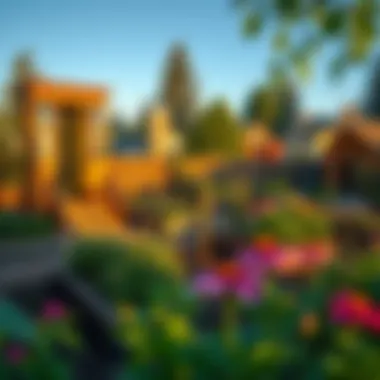
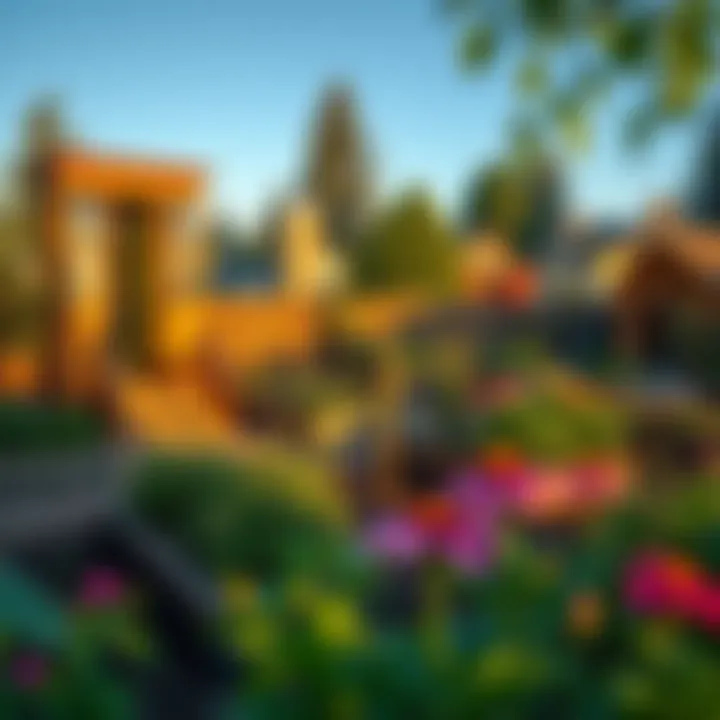
Intro
Portland, Oregon, has long been renowned as a city bursting with diversity and character. It's not just renowned for its coffee shops and food carts; the neighborhoods echo the rich tapestry of the city, each with its own personality and charm. From hipster havens to family-friendly enclaves, understanding which neighborhoods truly shine can make all the difference when considering a move. This comprehensive guide digs deep into what makes these areas tick, shining a light on their unique features, amenities, and vibes.
Home Features
Architectural Marvels
In Portland, architectural styles are as diverse as the people who inhabit them. Old Victorian homes sit alongside sleek, contemporary builds, creating an eclectic aesthetic. Each neighborhood showcases distinctive traits:
- Pearl District: Known for its warehouse conversions and urban lofts, this area features brick buildings that have been retrofitted with modern amenities.
- Alameda: A stunning showcase of classic Craftsman bungalows and mid-century homes, Alameda radiates warmth and charm, often adorned with lush gardens.
- Sellwood-Moreland: Here, you'll find a quirky mix of historic cottages and modern constructions, where creativity resonates in the architectural designs.
As you wander the streets, it’s easy to feel the stories embedded within these homes. Each block has its own rhythm, reflective of the people who call it home.
Unique Design Elements
Beyond the structures, it’s the little details that really bring the neighborhoods to life. Whether it's a stunning mural splashed across a building or a cleverly landscaped front yard, Portland doesn't shy away from self-expression.
- Sustainable Features: Many homes incorporate green building practices, using recycled materials or solar panels, signaling an environmentally conscious ethos.
- Local Artisans: A blend of work by local artists can be found in homes, from handcrafted furniture to unique light fixtures, marking them as distinctive treasures.
As you explore, take note of how these neighborhoods infuse a touch of personal flair into the architectural framework.
Interior Design Inspirations
Color Palettes and Themes
When it comes to interior design, Portlanders embrace an array of styles that reflect the surroundings. Soft earth tones that mimic the lush landscapes or vibrant hues inspired by the city's murals are commonplace. Popular themes include:
- Bohemian: Layered textures and eclectic finds create cozy spaces that encourage creativity.
- Minimalistic: Clean lines paired with functional furniture promote a sense of calm amid the urban hustle.
- Industrial: Exposed brick and metal accents echo the city's industrial roots, creating a rugged aesthetic.
Each color palette and theme intertwines, much like the communities themselves, reflecting both individuality and shared sensibilities.
Furniture Arrangement Tips
To maximize the potential of any space, understanding furniture arrangement is key. In Portland, where open spaces are treasured, consider the following strategies:
- Flow is Essential: Keep paths clear to enhance movement. Make sure your arrangement promotes easy navigation without clutter.
- Utilize Multi-Functional Pieces: Opt for furniture that serves dual purposes, such as a coffee table with storage, to maximize functionality without sacrificing style.
- Accent with Local Decor: Incorporate decor from local artisans to bring character into your home while supporting the community.
Maximizing each space not only enhances living but also embodies the true spirit of Portland's neighborhoods, marrying form with function in a way that feels just right.
"In Portland, the neighborhoods shape the identity of the city just as much as the people who reside within them."
By delving into Portland's neighborhoods, potential movers and real estate enthusiasts gain the upper hand in navigating this vibrant urban landscape. The essence of Portland lies not only within its stunning sights but also in the unique, heartwarming communities that make it home.
Prelims to Portland Living
Living in Portland, Oregon, is more than just having an address; it's about immersing oneself in a vibrant tapestry of culture, nature, and community spirit. Understanding Portland's unique urban landscape is vital for anyone looking to make a move, whether you're a long-time resident or a newcomer.
Portland's neighborhoods each bring their own flavor, a blend of historical charm and modern day conveniences. From tree-lined streets to bustling avenues, your experience can be vastly different depending on where you settle down. This article highlights the beauty of each area, aiding readers in finding a fit that aligns with their lifestyle, preferences, and aspirations.
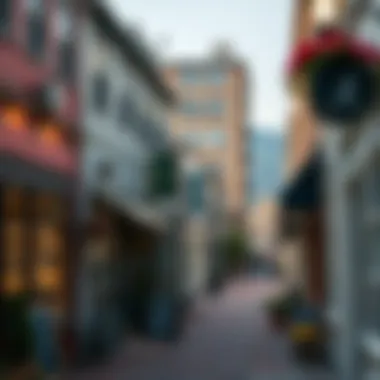
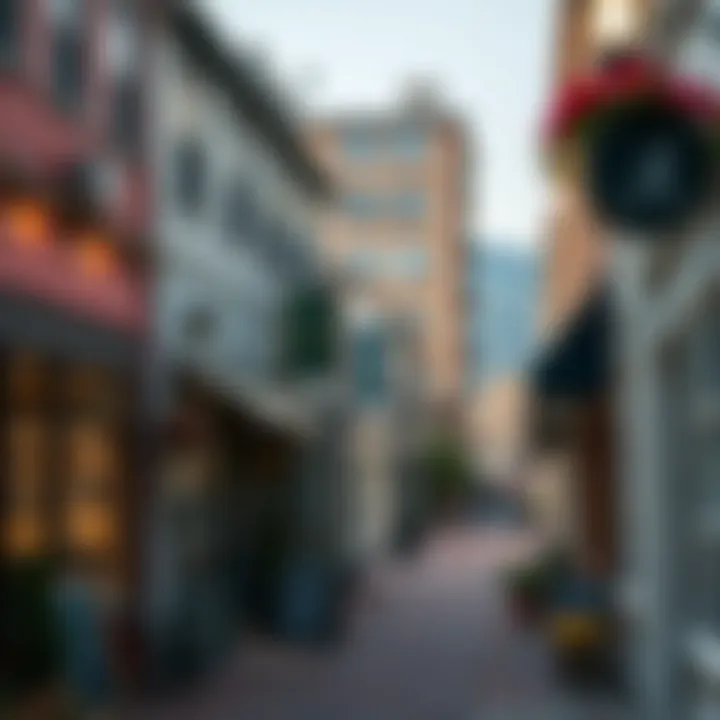
Providing insight into neighborhood character, density of amenities, local schools, and parks encourages readers to take a thoughtful approach to relocation. Factors such as commute times, access to public transportation, and walkability are all crucial to consider, affecting not just daily routines but overall happiness in that space.
As you dive deeper into the information ahead, you’ll grasp how Portland’s neighborhoods are interconnected, yet distinct, each offering its own slice of the city’s vibrancy. Whether you seek a bustling urban hub or a tranquil family-friendly enclave, knowing what each neighborhood has to offer can make all the difference.
"Portland is not just a place to live; it’s a community in which to thrive."
An Overview of Portland's Urban Landscape
Portland boasts a rich urban landscape characterized by stunning architecture, eclectic neighborhoods, and an ever-evolving cityscape. The downtown area shines with its mix of contemporary buildings and historic landmarks, creating a unique skyline that reflects the city's evolving story. You can stroll along the Willamette River, pausing at its many parks that offer both recreational activities and serene retreats.
Each neighborhood contributes to the overall charm of Portland. From the industrial feel of the Pearl District to the residential intimacy of neighborhoods like Laurelhurst, the diversity is palpable. The city's layout, with its bridges and parks, facilitates exploration and discovery. Portland is often described as a city that balances urban living with a close connection to nature, manifesting in its extensive green spaces and bike-friendly policies.
The ambitious urban planning efforts also signal a commitment to sustainability. Portland's focus on pedestrian-friendly streets and efficient public transport connects residents to their communities and jobs, enhancing the quality of life.
Cultural Diversity and Community Engagement
Portland is a veritable melting pot of culture, home to residents from various backgrounds and walks of life. This diversity is celebrated through festivals, art shows, and community events that occur year-round. From the lively Mississippi Avenue Street Fair to the bustling Portland Saturday Market, these events foster connections and encourage cultural exchange.
Community engagement is a significant aspect of Portland living. Many neighborhoods have active neighborhood associations, which work to enhance local quality of life, address issues, and organize events. The involvement of residents in decision making creates a sense of ownership and pride in the community. Whether it's through participating in local elections or volunteering for neighborhood projects, the call to action is one that many Portlanders embrace.
As a result, newcomers can expect a warm welcome as they integrate into these vibrant communities. Unique local businesses, artisan markets, and organic farms not only support local economy but also strengthen the bond among neighbors. Understanding and appreciating this interwoven cultural fabric is essential for anyone seeking to call Portland home.
Neighborhoods: A Closer Look
Understanding Portland's neighborhoods is vital for anyone considering a move to this thriving city. Each area has its own flavor and characteristics that cater to different lifestyles. This section will provide a detailed exploration of several key neighborhoods that define the fabric of Portland. From walkable streets filled with shops to family-friendly parks, every neighborhood offers unique benefits and challenges that potential residents should account for. This insight can greatly assist in making informed choices about where to live.
The Pearl District: A Hub of Modernity
The Pearl District stands as a testament to Portland's modernity and urban design ethos. It showcases slick condo developments that rise alongside repurposed warehouses, a marrying of the new and the historic. Residents here enjoy art galleries, chic boutiques, and a celebrated culinary scene, which keeps the neighborhood lively day and night. Not just a pretty face, the Pearl also boasts convenient access to public transit and bike paths, making it ideal for those without a car.
When thinking about living in the Pearl District, consider the lively community events such as art walks and farmers' markets. Essentially, it’s a neighborhood that captures the essence of contemporary life while breaking bread with the past.
"In the Pearl District, every corner has a story, and every window offers a glimpse of Portland's cultural heartbeat."
Nob Hill: Historic Charm Meets Contemporary Living
Nob Hill, or Northwest 23rd Avenue, is a delightful blend of historic architecture and contemporary charm, making it one of Portland's most cherished neighborhoods. Strolling through its tree-lined streets feels like stepping back in time with Victorian houses nestled alongside diverse shops and cafes. The vibrant local scene offers an abundance of eateries, from classic diners to modern bistros.
Living in Nob Hill means experiencing the pulse of community engagement. Frequent events, such as street fairs and art walks, foster an inviting atmosphere. One should reflect on the sense of belonging here; it’s more than just a place to reside; it’s a community to immerse oneself in.
Hawthorne: A Blend of Art and Authenticity
The Hawthorne district embodies Portland's artistic spirit and bohemian vibe. Known for its eclectic mix of vintage shops, indie bookstores, and art galleries, it attracts creatives and those seeking authenticity. The area's colorful murals and vibrant street life create a lively backdrop that resonates with a sense of belonging.
The local dining options are as diverse as its residents, with food carts lined up for quick bites or sit-down restaurants offering local fare. Importantly, Hawthorne is pedestrian-friendly, making it easy to soak in the atmosphere. Those considering a home in this area can expect an active lifestyle filled with cultural events.
Alameda: A Family-Friendly Retreat
Alameda presents a stark contrast to the bustling urban environments of Portland. This peaceful neighborhood offers spacious parks, quaint homes, and a strong sense of community. It is particularly appealing to families, thanks to its top-rated schools and recreational spaces. Residents here often find themselves attending community-centric events at local parks, fostering connections.
The calm streets and friendly neighbors create a warm atmosphere that makes you feel right at home. For anyone seeking a suburban vibe while enjoying quick access to Portland’s urban offerings, Alameda is worth considering.


Sellwood: Quaint Community Feel
Sellwood is an embodiment of small-town charm right in the heart of Portland. Emanating an inviting quality, this neighborhood is known for its locally owned shops and eateries, many of which are housed in charming old buildings. Its slower pace is a refreshing contrast to other bustling areas, making it appealing for those wanting to escape the city's chaos.
The community in Sellwood prides itself on a connected lifestyle; neighbors often meet for weekend markets or stroll through the lovely parks. It’s a neighborhood where you can kick back and enjoy the simple pleasures of life, which can be appealing for many.
Laurelhurst: Elegant Residences and Greenery
Laurelhurst is an elegant neighborhood known for its stately homes and lush greenery. It features parks and tree-lined streets that create a striking visual appeal. The Laurelhurst Park, a central neighborhood feature, invites residents for outdoor activities like jogging, picnicking, or simply relaxing under its well-shaded trees.
As a prominent residential area, Laurelhurst is another great choice for families, with a friendly atmosphere and strong school systems. Here, you'll find a balance between tranquility and accessibility to nearby urban amenities, making it an attractive option.
St. Johns: Unique Character and Scenic Views
St. Johns is a unique neighborhood with a character all its own, notable for its historic buildings and stunning views of the Columbia River. Its somewhat artistic atmosphere attracts a mix of residents, from families to young professionals. Local businesses dotted throughout the area foster a sense of community.
St. Johns stands out with its vibrant food scene and annual events that celebrate local culture. It is the kind of neighborhood that embraces individuality while providing a picturesque backdrop that many find appealing. It’s perfect for anyone looking to blend charm with scenic beauty.
Evaluating Neighborhood Features
Understanding the features of a neighborhood is a cornerstone for anyone considering a move. It’s not just about the address, but also how that address fits into your lifestyle. In a vibrant city like Portland, the neighborhoods are as distinct as they are charming. Evaluating neighborhood features means diving into aspects such as accessibility, local amenities, and community engagement. These elements significantly affect day-to-day living and can truly make or break your experience as a resident.
Accessibility and Transportation Options
Portland prides itself on being one of the most walkable cities in the U.S. The efficient transportation network is a big plus for potential residents. Whether you're commuting to work downtown or heading to the farmer's market, understanding the options available is crucial.
You can count on reliable services like TriMet, which covers bus lines, MAX light rail, and the streetcar. For eco-conscious individuals, the city is bicycle-friendly, with numerous bike lanes and two-wheeled routes that take you through scenic views. In some neighborhoods, like the Pearl District, amenities are often within arm's reach, allowing for a car-free lifestyle. However, neighborhoods farther from the city center might require a vehicle or proper public transport planning.
Local Amenities: Shops, Parks, and More
When searching for a suitable neighborhood, local amenities can provide a glimpse into the lifestyle you can expect. Portland offers multitudes of parks, local shops, and dining options that vary from community to community. For instance, if you find yourself in Laurelhurst, you can enjoy the serene landscapes of Laurelhurst Park, which is popular for picnics, jogging, and art fairs. Alternatively, if you prefer quirky shops and cafes, Hawthorne Avenue has a plethora of options that cater to your hipster vibe.
Here's a quick glance at some amenities you might consider:
- Grocery Stores: Accessibility to fresh, local foods like Fred Meyer in Nob Hill or the exotic spices of the International Marketplace.
- Parks: Green spaces such as Forest Park for those looking for jogging trails or picnic spots.
- Dining: Culinary experiences ranging from food carts to upscale dining, scattered throughout neighborhoods.
- Shopping: Local boutiques versus major retailers can significantly impact your shopping habits.
These features not only showcase the character of a neighborhood but also enrich your everyday life.
Community Engagement: Events and Gatherings
The heart of Portland lies within its community ties and events. Neighborhood gatherings can provide insight into the local culture. From street fairs to music festivals, there seems to be a continuous buzz of activity.
Participating in community events can elevate your experience and foster a sense of belonging. Neighborhoods like St. Johns are known for their ambitious community festivals and farmers markets, drawing locals who love to mingle and share. Moreover, community engagement fosters relationships among residents and supports local businesses.
Key factors regarding community engagement include:
- Neighborhood meetings: Great for understanding local issues and getting involved.
- Festivals and fairs: Offer a wonderful opportunity to meet neighbors.
- Volunteer opportunities: Engaging with local organizations can expand your social circles and deepen your roots in the community.
When residents come together, they create a tapestry of lives woven through shared experiences, enriching the community for years to come.
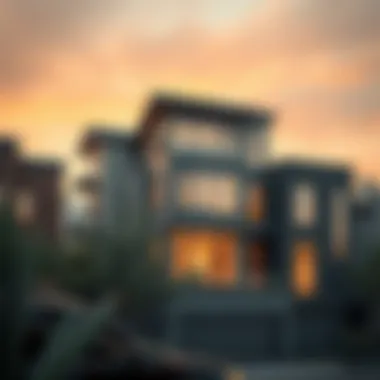
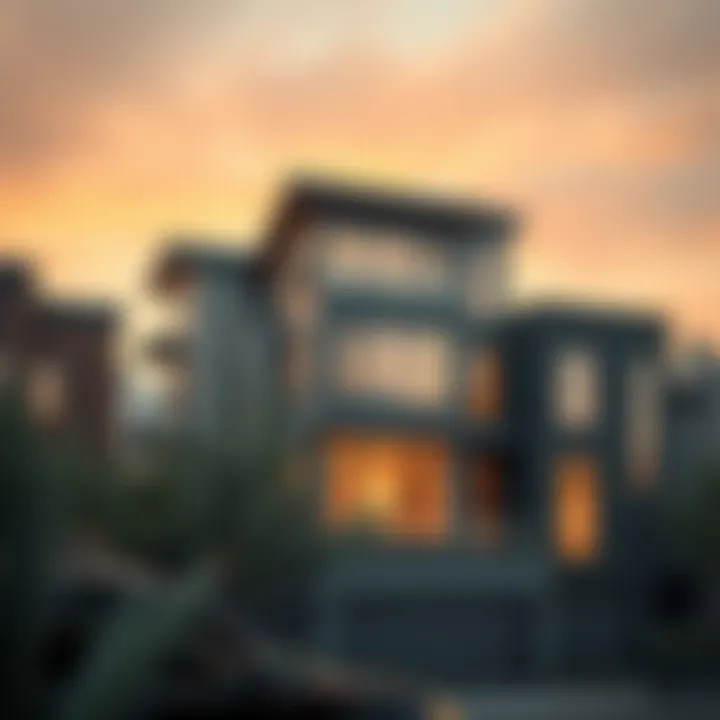
In sum, evaluating these features—accessibility, local amenities, and community engagement—provides insight into which neighborhood in Portland may align perfectly with your personal and professional lifestyle.
Real Estate Trends in Portland
Understanding the real estate landscape in Portland is not just a casual pastime; it’s crucial for anyone eyeing the property market, whether you're considering moving to the city or simply trying to keep your investment portfolio robust. The recent trends speak volumes about the vibrancy and diversity of Portland’s neighborhoods. Factors like demand, pricing stability, and growth potential can guide potential buyers in making informed decisions in a rapidly changing market.
With diverse neighborhoods ranging from hip and artsy to tranquil and family-friendly, each area offers unique features that affect real estate values. This section will dive into the current market dynamics as well as forecasting for future growth.
Market Overview and Pricing Insights
Portland’s real estate market has been a hot topic over the past few years. According to data, the median home price has seen fluctuations that closely mirror the broader economic climate. Many areas, particularly closer to downtown, are commanding higher prices due to their prime locations. For example, neighborhoods such as the Pearl District and Nob Hill have seen significant upward trends due to their appealing amenities and urban lifestyle.
- Current Median Prices: The current median home price in Portland hovers around $550,000, though this can vary dramatically by neighborhood.
- Days on Market: Houses in sought-after areas often sell within weeks, while others may linger for several months. This is critical information for buyers looking to enter this market—they need to act fast if they find a property they love.
- Rental Market: Renting remains another option, with average rents in the city nudging close to $2,000 for a one-bedroom apartment—a reflection of demand and the desirability of the locale.
The interplay of affordability, location, and available inventory is fundamental to understanding Portland's real estate market. Keep an eye on listings—you might just spot a gem before someone else does.
"Knowledge of local market trends can be a game changer when it comes to making smart real estate decisions."
Investment Potential and Long-Term Growth
When speaking of investment opportunities, Portland is akin to a fine wine—it only gets better with age. Its growing tech scene, influx of new residents, and commitment to sustainable living make it appealing for real estate investment.
Factors contributing to Portland's long-term growth include:
- Economic Stability: With a robust job market, Portland is attracting young professionals and families alike. This influx increases demand—not just for homes but also for amenities, schools, and services, boosting the overall real estate landscape.
- Urban Development Plans: The city has ambitious development goals that focus on improving public transportation, green spaces, and housing diversity. These projects are often harbingers of real estate appreciation as they enhance the livability and accessibility of various areas.
- Community Investment: Areas like St. Johns or Sellwood are seeing community-led initiatives aimed at sustainable growth, which can increase property values significantly over time.
Investors often find potential in up-and-coming neighborhoods. Keep your ear to the ground. Remember the right time to jump in on a property can greatly influence future returns. If you’re putting down roots or eyeing an investment in Portland, being informed is your best bet.
Epilogue: Choosing Your Ideal Neighborhood
Selecting the right neighborhood in Portland can feel like looking for a needle in a haystack. There’s a multitude of factors to consider, and each decision might carry a significant weight in your overall satisfaction. This article shines a light on some key considerations for making that choice, underscoring the vital role that personal preferences play in the process.
Understanding your own desires and priorities is paramount. From proximity to work, to community activities and local amenities, the factors that might sway someone to pick Nob Hill over Hawthorne can vary widely. Whether it’s enjoying fresh coffee at a local café or having quick access to the waterfront in the Pearl District, what fits best for one person might not resonate with another.
Moreover, Portland's neighborhoods vary drastically in character and offerings. You may find areas like Laurelhurst to be a pristine oasis of parks and historic charm, while a vibrant area like Sellwood offers a lively mix of small businesses and artistic expression. Recognizing what’s important to you – whether that’s tranquility or excitement – will undoubtedly help in narrowing down your options.
When considering all these elements, it also pays to think long-term. Investing in real estate is not just about the now; it’s about visioning the future. Neighborhoods evolve, sometimes rapidly. Factors such as gentrification or the development of new amenities can reshape an area considerably. Knowing what may come further down the road might influence your choice in ways that aren't immediately apparent.
"Picking a neighborhood isn't just about the buildings and streets; it’s about the life you want to live."
By taking the time to reflect on your priorities, you can better align your choice with your lifestyle. Don't just rush into things because a place looks good on paper; dive into the details, explore multiple neighborhoods, and truly feel what each place has to offer.
Personal Preferences and Priorities
Personal preferences and priorities define your unique lifestyle. Before you dive into the bustling streets of Portland or settle in a quiet enclave, you should jot down what truly matters to you. Here are some key considerations:
- Commute and Transport: How important is your daily commute? Consider public transport options or accessibility to key highways.
- Community Vibes: Do you thrive in a lively neighborhood filled with activities, or do you prefer serenity in a family-friendly environment?
- Cultural Offerings: Is it essential for you to be near theaters, art galleries, or local pubs? Maybe you want easy access to farmers' markets or food trucks.
- School Systems: If applicable, looking into quality school districts could be a priority for families.
- Outdoor Access: Portland is known for its nature spots. Whether it’s parks, hiking trails, or recreational areas, your inclination towards outdoor activities may steer your choice.
By fully understanding your own priorities and what they mean in the long run, these fundamental factors can make a world of difference in your neighborhood choice in Portland.
The Future of Neighborhood Living in Portland
As urban development continues, the future of neighborhood dynamics in Portland remains a hot topic among residents and newcomers alike. Trends in gentrification, sustainability, and community involvement are reshaping how neighborhoods are perceived and function. For instance, areas that were once overlooked are now being revitalized, driven by investments in infrastructure and local businesses.
- Gentrification: While it brings new life, it also poses challenges, as long-term residents face changes in the community's character. Awareness and sensitivity to these dynamics are essential for future stability.
- Sustainability Initiatives: Many neighborhoods are embracing sustainable living practices, from promoting local food systems to enhancing public transport.
- Community Involvement: As people become more engaged, neighborhoods are also changing. Local meet-ups, events, and initiatives strengthen community ties.
Keeping an eye on these developments can help potential movers spot upcoming neighborhoods ripe for investment or those that may better align with their values.



